Japanese Curry Is the Best Grand Prix Treat
Welcome to Grand Prix Gastronomy! This week, I’m cooking Japan's national dish, curry rice.
This project is pretty simple. As a complement to each race weekend, I’ll be cooking the national dish of that race’s host country and sharing information about the process and that dish’s history along the way in an effort to grow more deeply immersed in the local culture from my own home.
What Is Japanese Curry Rice?
I’d never had Japanese curry until the first time I flew to New York City to work from Jalopnik’s official headquarters. One of the members of the video crew at the time put in a lunch order for chicken katsu curry and asked if I’d like some, too. I’d asked him to describe the flavor, since I had really only just started experimenting with curries of various cuisines, and he was at a loss — but the salty-sweet-fruity flavor of the Japanese version was incredible. I could see why he had a difficult time summing it up in a few words, or likening it to another food.
According to Trends in Japan, curry rice is the national dish of Japan, and it’s allegedly eaten once a week. Curry was actually imported from Western cuisine; the British had discovered curry powder in India, then brought it to Japan. It was adopted by the Imperial Japanese Navy to help prevent thiamine deficiency, and it just stuck around after that to become adapted to Japanese tastes — to the point where it became one of the most common school cafeteria meals and is said to be eaten by Japanese folks at least once a week.
While curry is prevalent in multiple countries, Japanese curry is usually thicker in texture, sweeter, and less spicy than its Thai or Indian counterparts. That sweetness often comes from the addition of an apple and/or some honey. I’ve found that in many Japanese curries, I can distinctly taste the apple, but not in a weird way; it’s a great flavor, and it reminds me of autumn.

 Tiktok failed to load.
Tiktok failed to load.Enable 3rd party cookies or use another browser
This Week's Recipe
I opted for a recipe from Serious Eats because it included a fantastic description of Japanese curry, taking into account both its history and the author’s changing perceptions of the dish as they sampled different versions of the meal.
This particular curry is kind of like a stew, so the meat and vegetables are all cooked together in the same broth, then finished off with a roux. If you’ve had katsu curry, then, you’ll notice this is different; in katsu curry, a sauce is served overtop a fried meat cutlet. I’ll be honest, I was kind of tempted to whip up a chicken cutlet on the side — but I did decide against it!
This dish is great served alongside picked ginger; I can usually find jars of it at the grocery store no problem. Other pickled veggies, called tsukemono, are great additions if you’re feeling up to pickling things yourself. Rice is obviously the no-brainer side dish for curry, but you can also serve it with noodles or on bread.
Cooking Japanese Curry Rice
Like pretty much all curries, this dish isn't super difficult to make, but it does rely on some patience in layering flavors and achieving the right texture. You'll start by toasting and grinding your own whole spices to make a the spice blend, and you can get a little creative here if you're trying to highlight one flavor over another. I will say, though, that you'll want to guarantee you have dried orange peel on hand: it adds to the distinct fruitiness of kare raisu.
I just about always start by cutting up my veggies, and in this recipe, that meant a yellow onion, carrots, and potatoes — which took no time at all. Then, in a heavy-bottomed pan, you'll cook your seasoned chicken thighs until they're browned. Remove, set aside, then cook down your onion before adding your carrots for a few minutes. Add your chicken stock and dashi, or a delicious stock made of dried bonito flakes and seaweed (I was able to find powder packets at my local grocery store), then let it simmer.
As the liquid comes up to temperature, cut up your chicken into bite-sized pieces and add it into the broth along with your potatoes and grated apple. Cook all that until the potatoes are tender.
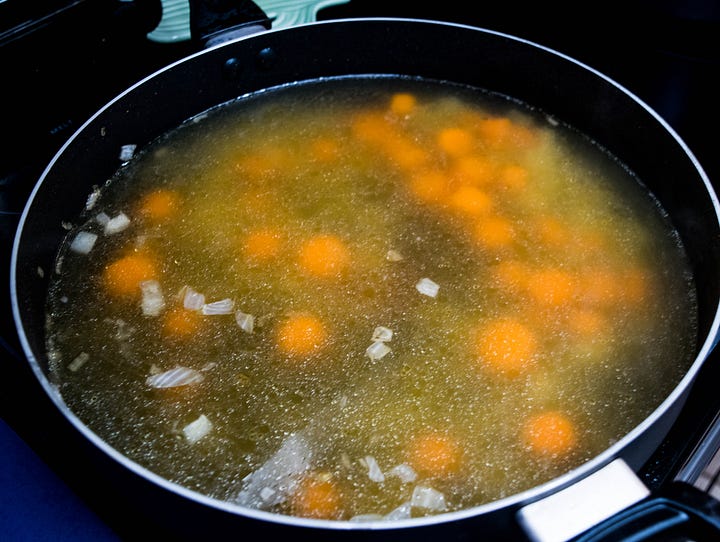
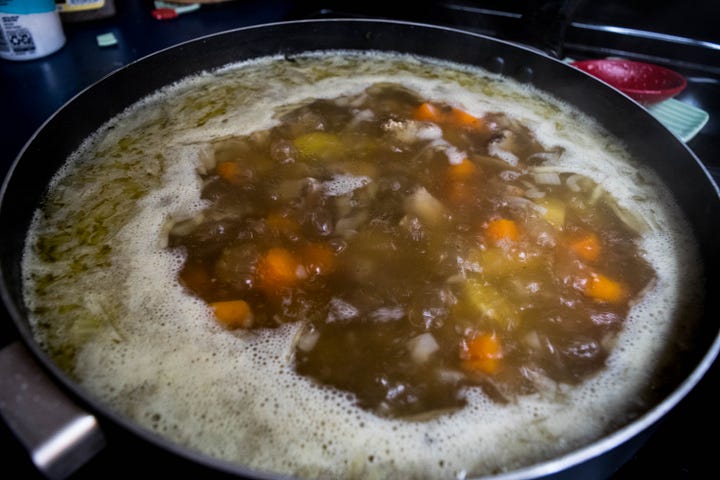
Now, here's where Japanese curry gets interesting. To thicken your broth into that silky gravy, you'll make a roux in another saucepan by cooking flour in melted butter and then adding in freshly grated ginger and some of your curry spice blend. After you let it cool for a minute, you'll stir it into your broth and let everything simmer until it reaches the ideal texture. It took a while for me to get mine where it wanted to be, but just before I was done, I added in some frozen peas and called it a day.
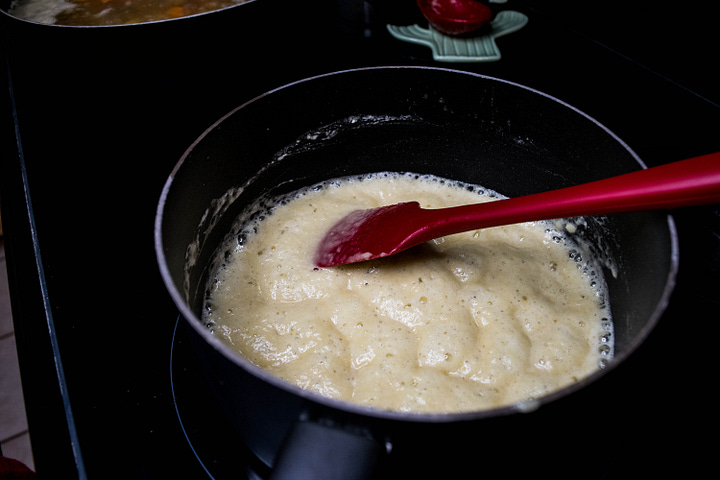

If you want to serve this properly, whip up some short-grained rice… which I realized at the very last minute that I did not have. I used microwave sticky rice instead, which felt like a crime against cuisine, but it was a fine substitute for a last-minute side. I also topped it all off with pickled ginger, which I love. (I will talk about this in a later episode, but I go through some pretty intense food fixations with specific ingredients, and right now, pickled ginger is one of those ingredients. If you're not sure how to use a whole jar of the stuff after this recipe, may I kindly recommend frying some eggs in chili garlic oil and topping it with pickled ginger. Or turning a broccoli cole slaw mix into a hot salad to serve topped with pickled ginger. Or just eating it as a snack. It's just so good.)
I served my kare raisu with a glass of bobal, which is a really fruity wine that complements other fruit flavors — like the apple in this dish — while also having a nice tea-like savoriness.
So, What's the Verdict?
To say that I am now obsessed with kare raisu is perhaps the understatement of the year. It's such a comforting, rich, warm meal that's just as good slowly warmed up the next day that I had to remind myself that I'd need to relax while eating it. I just wanted to consume it as quickly as possible!
If you aren't familiar with Japanese curry, you'll probably expect it leave your lips burning with spice, but it instead introduces a whole slew of new possibilities to your curry-eating world. It's warm without being spicy, a little bitter without making you twist your lips, and also a little sweet. In texture and flavor, it reminded me a little more of a stroganoff than an Indian curry — but that made it irresistible.
After one bite, I knew I'd be making this dish again. In the future, though, I do think I'll change one thing: the apple. Specifically, I wanted more of it! That fruity kick is part of what makes this dish so special, and I'd love to lean into it a little more to see how it turns out. Kare raisu ended up being one of my favorite GPG dishes yet.
If you want to stay tuned…
Here are all the relevant links in one place, if you want to subscribe:
All Grand Prix Gastronomy-related content will be free — but if you want to drop me a donation on PayPal, that’s always welcome.




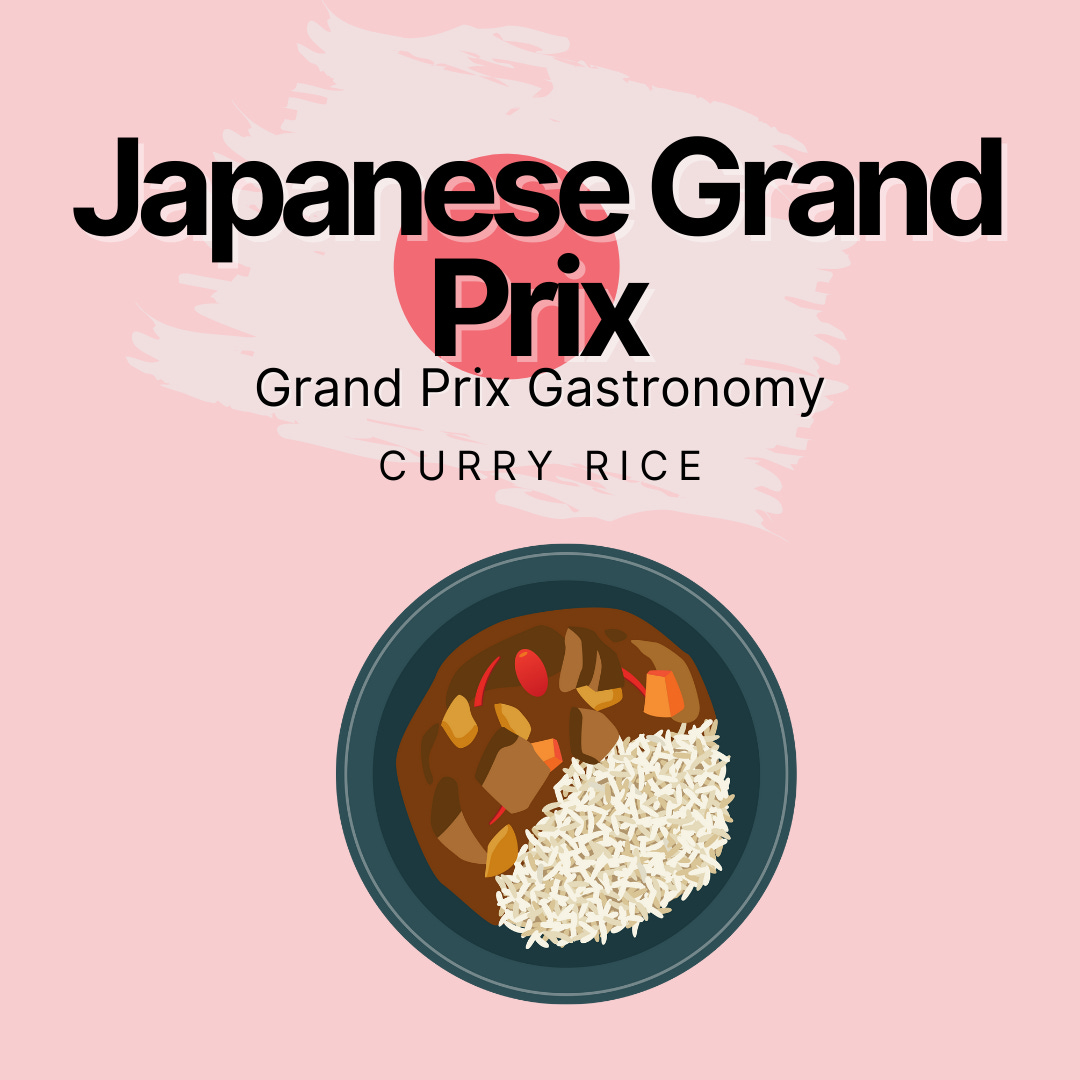
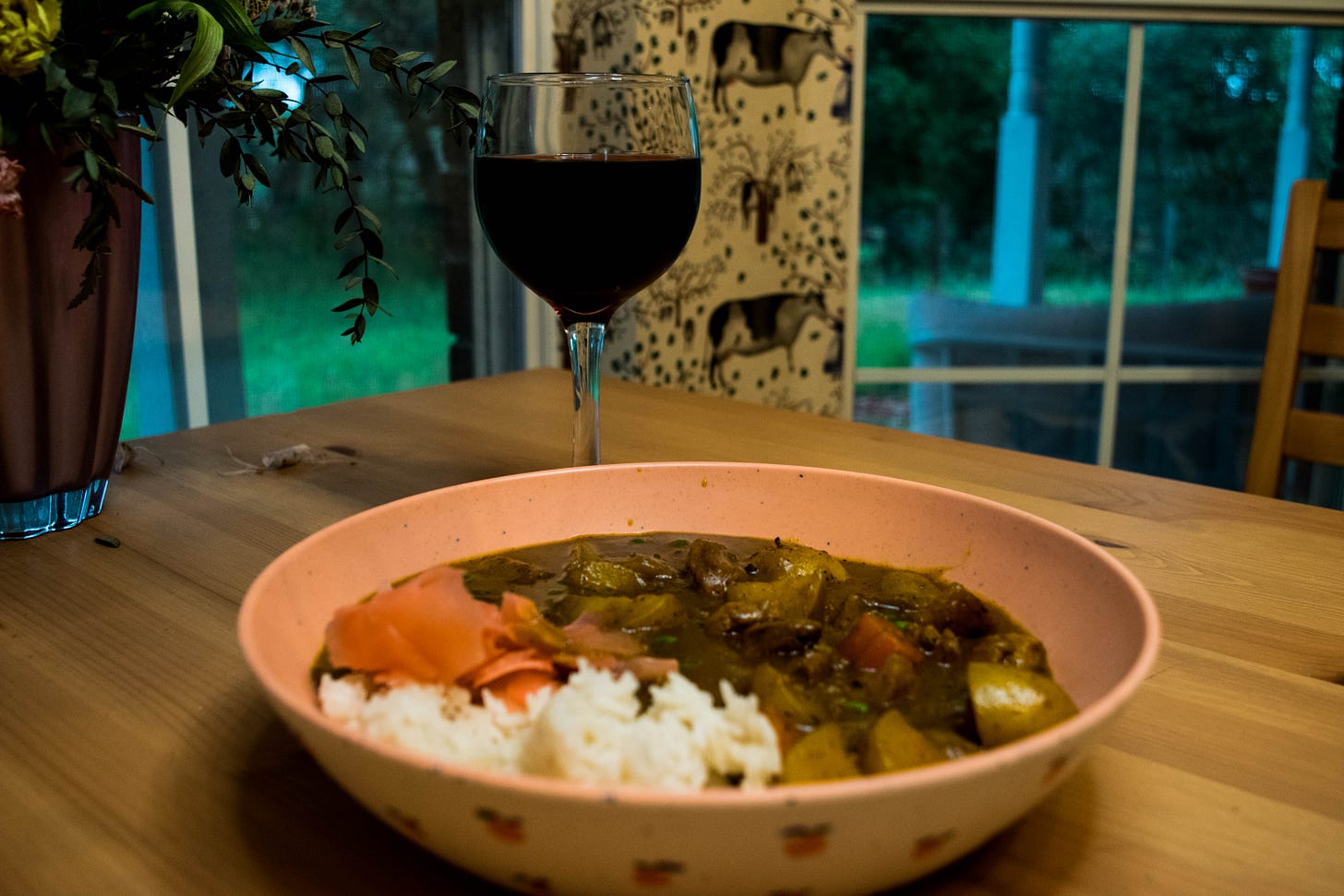
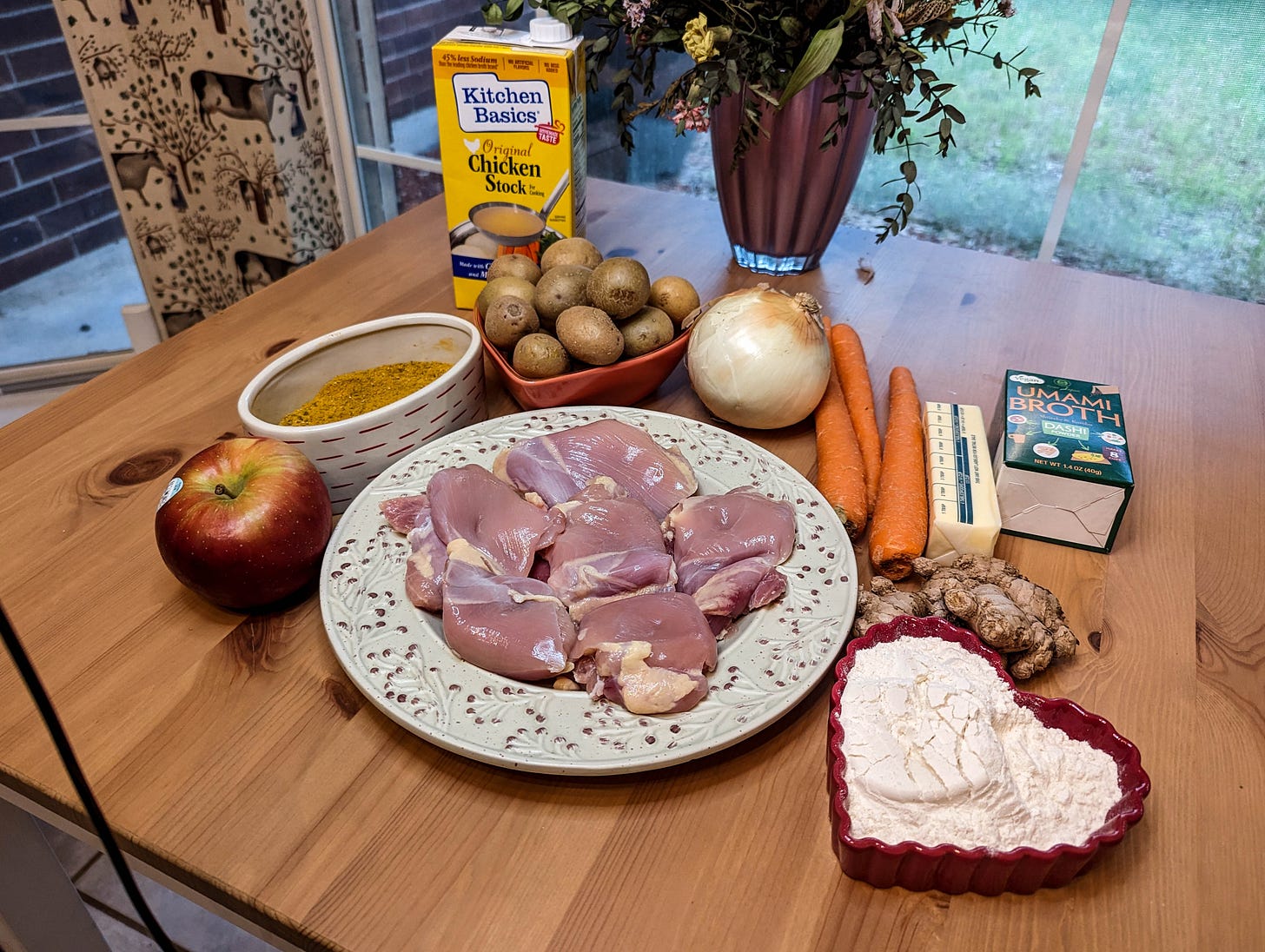


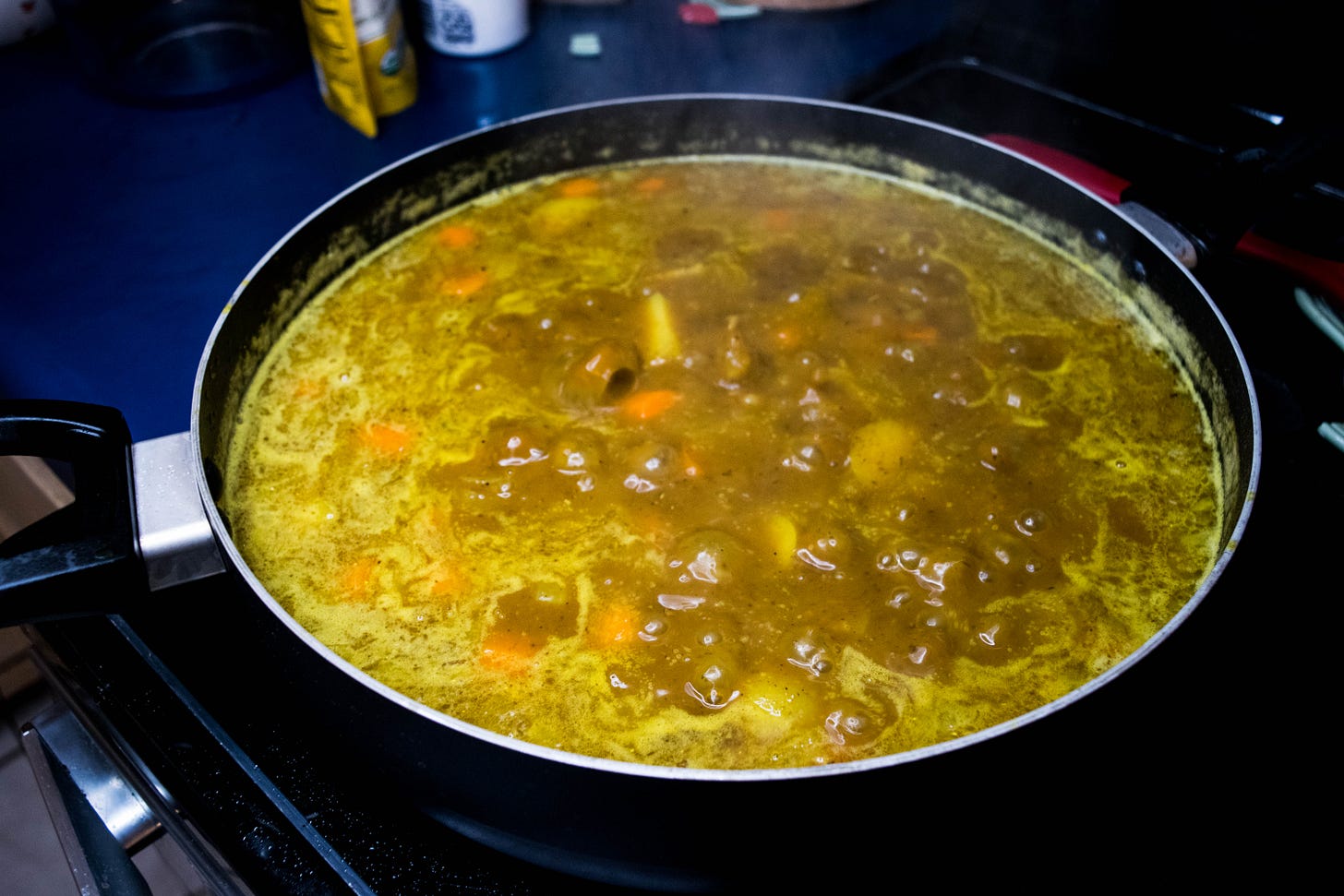
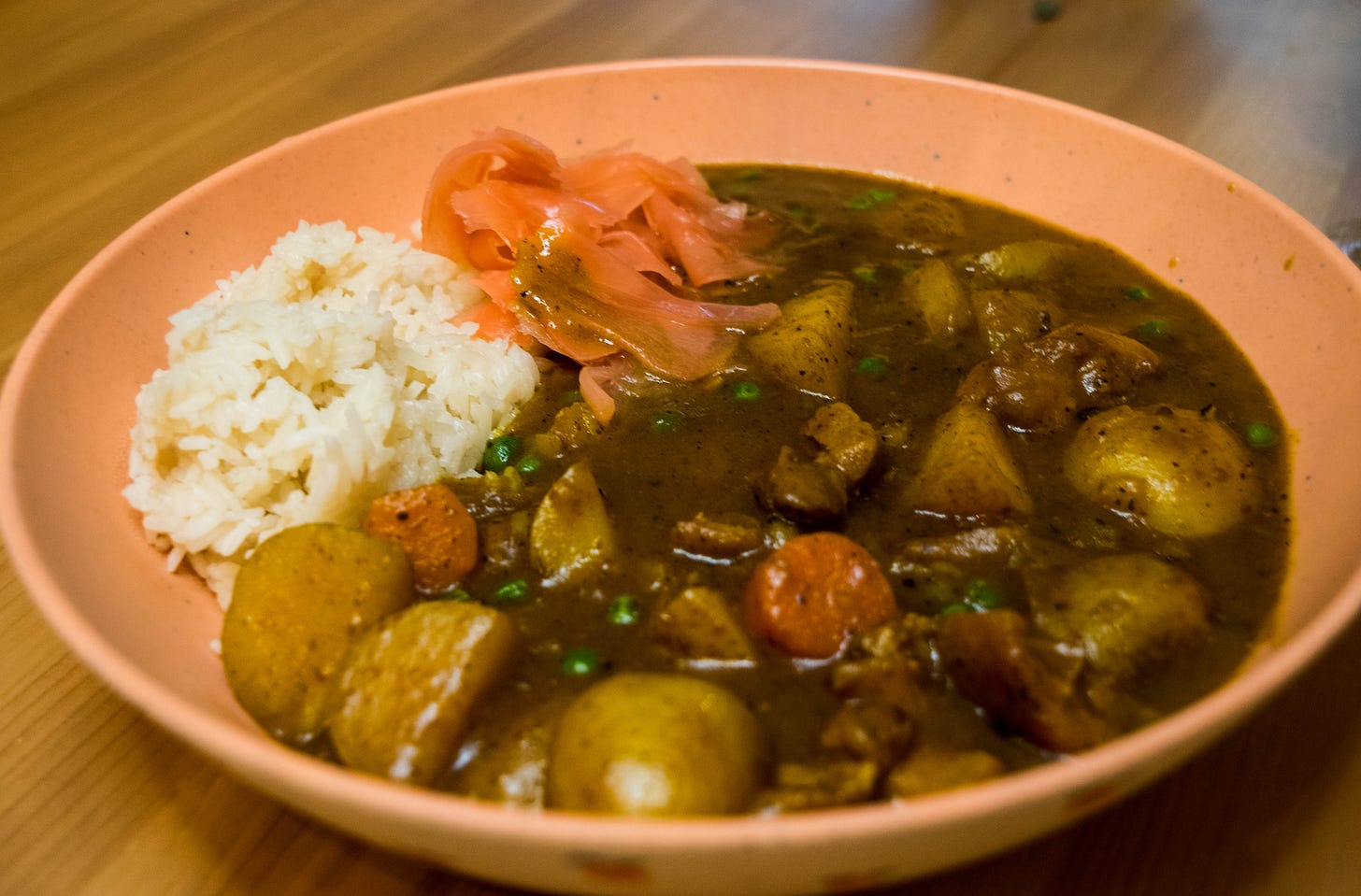
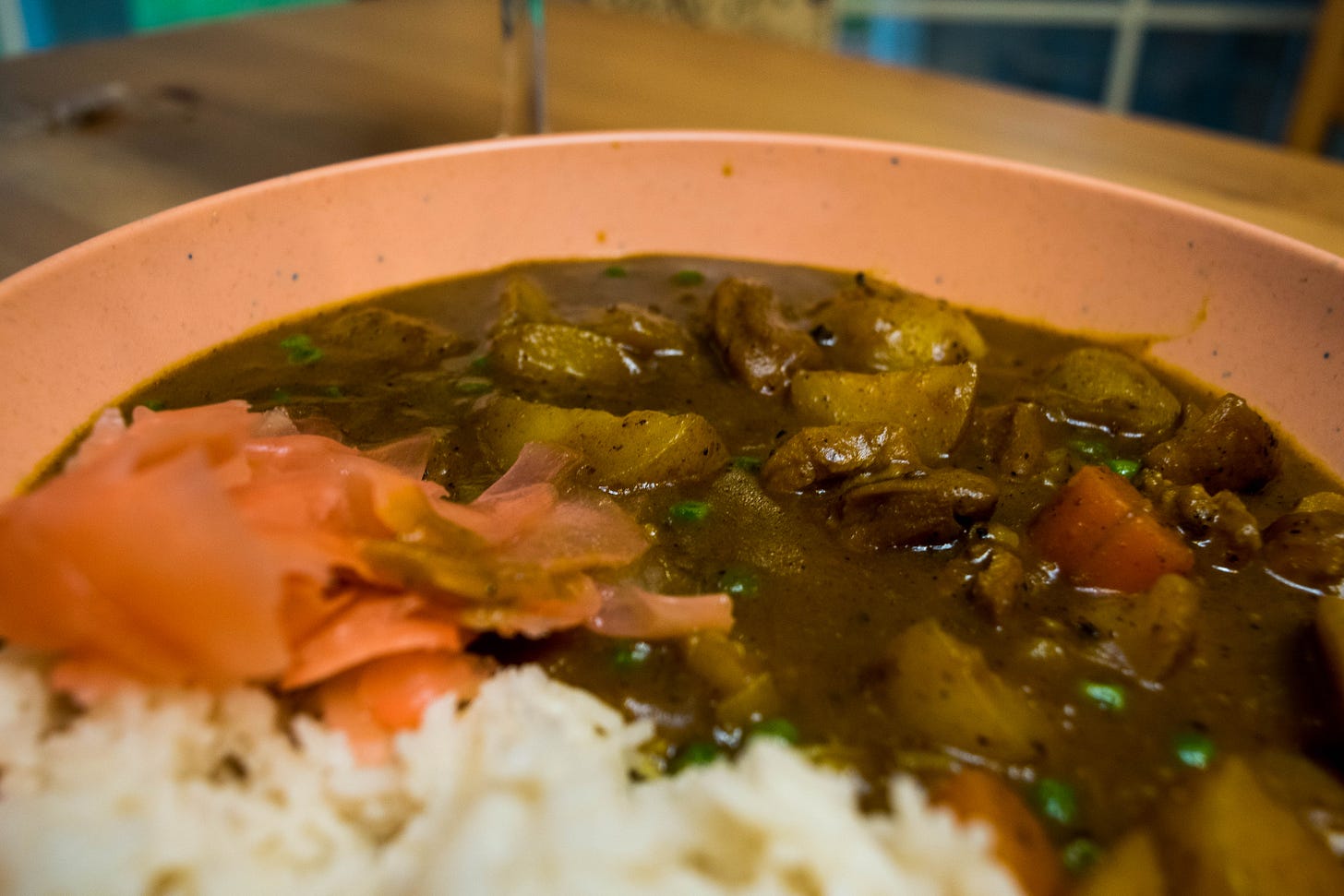

Just made Japanese curry the other night. If you want to cheat, the Golden Curry mix is surprisingly very good and as easy as it gets.
Seconding the Golden Curry it's very good. (Japanese Curry was a staple in my bachelor meal days, and I still occasionally make it)